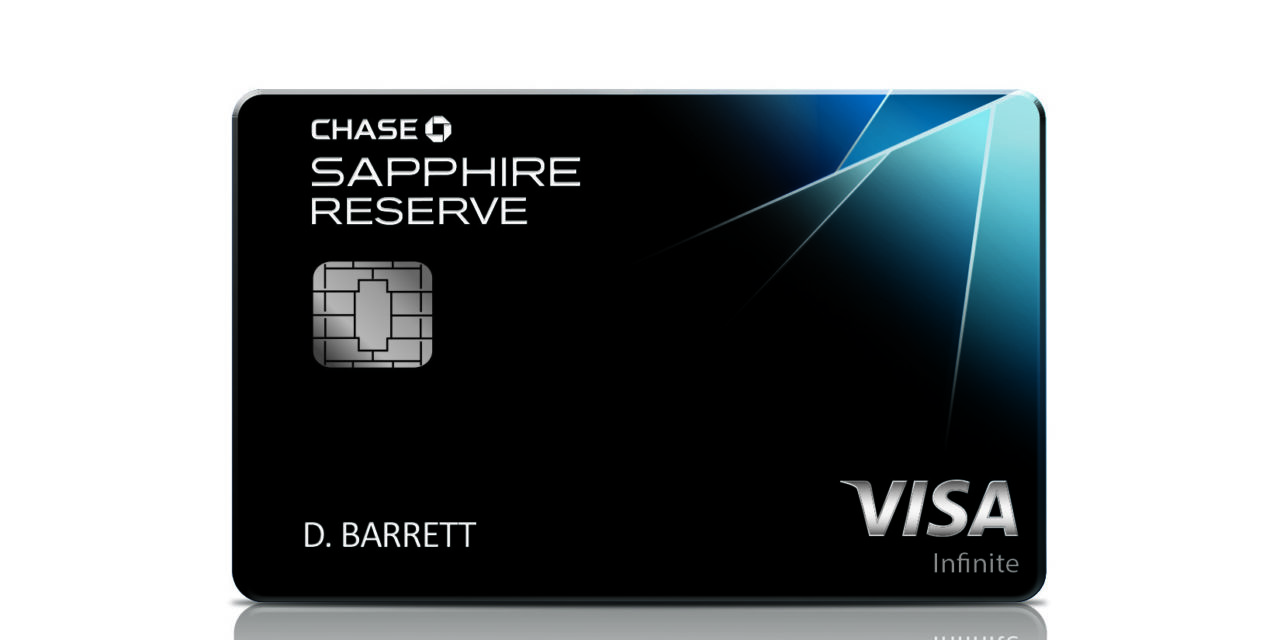The Chase Sapphire Reserve is arguably the king of premium travel credit cards. In spite of the recently increased annual fee, the card still carries a lot of value. However, with travel almost negligible for now, does it still make sense to carry it in your wallet? Should you renew it even if you have no possible sign as yet that travel would return to normal any time soon? Let’s have an analytical look at the benefits and see which ones make sense in the current climate.
Chase Sapphire Reserve Basics
Before we analyze the benefits, let’s make a few basic assumptions. The card charges a $550 annual fee. Given that most of us are frequent travelers, we’ll easily use the $300 travel credit each year. If you order DoorDash, you’ll also use the $120 credit. Please note that at many restaurants, DoorDash charges higher prices and adds fees to your bill. So let’s assume that you utilize the full travel credit and the DoorDash benefit is valued at $100. That leaves about $150 in value still left to redeem. Now, if Chase gave you that extra $100 credit recently, then your actual cost comes down to $50. In that case, it may still make sense to carry the card. This is a best case scenario. Given the current economic and political conditions, actual benefit use may be much lower as consumer spend shrinks.
Useful Benefits
From a practical standpoint, you can still use these benefits even while sitting at home:
- Travel Credit: If you cannot travel, you can simply buy a gift card
- DoorDash: If DoorDash serves your area, you can order food online
Useless Benefits
When you’re sitting at home, these benefits are rendered useless. This is not Chase’s or the Sapphire Reserve card’s fault, it’s just the state of pubic health and economic crisis that we find ourselves in. In fact, JP Morgan Chase CEO Jamie Dimon even stated publicly that we’re entering a “bad recession”,
- No foreign transaction fees: You can’t leave the country right now, so this benefit is not useful and will not be at least for the next few months.
- Global Entry/TSA Pre-check: It may be many months before you head to the airport, until that time you’re not using this benefit. Also, your benefit is valid for 5 years if you already have it. So having the Chase Sapphire reserve won’t really help you much.
- 3x on travel and dining: This is partially useful, especially if you’re ordering from a restaurant and then picking up food. The 3x on travel part is redundant for now.
- Lyft Pink Benefits/10x on Lyft rides: Rideshare companies are going to be hit really hard. Social distancing is the new normal. It will take many months before people embrace the though of riding in someone else’s car.
- Priority Pass: Lounges are closed and will be for a while. That settles the argument.
- Car Rental/Silvercar/Car Insurance Benefits: This is similar to the ride share benefit. Even after travel picks up, it will be many months before people happily want to hop into a car they don’t own.
- Trip Insurance/Baggage Delay/Lost Luggage/Trip Delay/Travel Insurance: By many estimates, it will be at least 18 months before the travel industry could return to normal. Until then, if you’re not going to travel a lot, you won’t be using any of these benefits.
Scenarios: 90/150/240/365 days
Scenario 1: If you’re a road warrior who primarily travels for work, you may be able to hit the road 90 days from today. However, travel may still be curtailed and won’t be at the same pace as it was until 2019. In that case, you’ll still lost almost 90 days of value in annual fees.
Scenario 2: If you travel frequently for leisure, you may be tempted to hit the road in the next 120-150 days, once you see many corporate travelers get back to their routine and operations return to normal. Even then, you’l lose close to 4-5 months in your annual fee value.
Scenario 3: If you’re the occasional leisure traveler who travels with family for a vacation or two, it may well be 240 days or more before you even feel safe to take your family out for a vacation. In this case, you would’ve lost easily over 8-9 months of value in your annual fee.
Here are a few deciding factors. How soon is your annual fee due? Has Chase already provided you with a $100 credit. If you’ve just paid the renewal fee and haven’t received the $100 credit, then when would you be most comfortable to book travel, let alone set foot on a flight in 2020? By most estimates, it may well be early 2022 by the time the travel industry recovers fully .
There’s an opportunity cost as well. If you downgrade or cancel the Sapphire Reserve, you can go for a credit card that offers a low or no annual fee, but instead helps you earn points on grocery spend. For example, I’ve downgraded my Sapphire Reserve and I’ve shifted spend to my Amex Gold Card, which gives me 4x on groceries and dining.
Also, as View from the Wing notes in this post, we may be entering a period of more travel restrictions instead of less.
The Pundit’s Mantra
As I mentioned in the intro, the card still has great value proposition. However, if we can’t travel in the near future, we can neither earn the points nor use the benefits. If you are sitting on the fence, here’s how you should think about it when it comes up for renewal. How comfortable will you be to hit the road right after travel gradually opens up? Will it be many months by the time you start traveling again? If the answer to the second question is a yes, then you’re more likely to pay the $550 and not use most of the card benefits.
This argument applies to other premium travel credit cards as well. They’re great when you’re on the road. However, how much value do they carry when you cannot even leave your house, let alone travel or go out for dinner at a restaurant? It may be many months or even up to a year before things get back to normal. If you’re not going to be able to utilize the benefits, you’re leaving $150 on the table.
Another option you could consider is to downgrade the card to the Sapphire Preferred or one of the Freedom cards. You’ll still keep your credit history and you’ll always have an option to upgrade in the future. The Freedom cards are actually a better option as you’ll pay no annual fee as you sit and wait this period out.
In a subsequent post this week, I’ll be elaborating on frameworks to analyze credit card annual fees from a pricing psychology perspective.
What do you think about the value proposition of premium travel credit cards like the Chase Sapphire Reserve, given the current economic and public health crisis? Let us know in the comments section.
___________________________________________________________________________________________________________________
This card is currently offering a 50,000 points bonus and a 0% Intro APR for 1 year, with a $0 annual fee!
__________________________________________________________________________________________________________________
Never miss out on the best miles/points deals. Like us on Facebook, follow us on Instagram and Twitter to keep getting the latest content!





I did receive the $100 AF credit. But I just had a very negative experience with CSR travel insurance. I had a legitimate claim and they denied it twice. I filed a complaint with my state’s insurance department. Next year, I will downgrade the card to CSP.
Also, George is an idiot. If he thinks that he will transiting thru Brisbane Australia, he is sorrily mistaken. That has been blocked since March 29th.
Hi JohnB,
Wow, that’s unheard of. I’ve usually heard of people having a decent experience with the CSR travel insurance. I hope you get it resolved soon!
Hi Points Pundit,
In these strange times we’re living in, I don’t see your point of view as contrarian (I agree with your argument). But it definitely is contrarian under normal circumstances. This being said, I wrote a few posts posing the same argument but for any premium credit card. If you look at cards like the Citi Prestige or Amex Platinum, the same points apply.
I plan on downgrading to the CSP when my annual fee is due in September assuming conditions remain the same.
Best Regards,
Anthony / Play Your Cards Right
Hey Anthony,
Good to hear from you. Yes, the current circumstances clearly alter the value proposition of many premium cards.
My CSR renewal is up in Sept, I messaged Chase about the $100 statement credit and they acted like they’d never heard of such a thing…I think they want me to cancel the card!
Hi Robert,
Thanks for reading. Yes, many blogs have reported about the hit and miss nature of the $100 credit. Also, Chase hasn’t traditionally offered retention bonuses on any of their card, unlike what American Express does.
I almost wonder if the people who write all these travel blogs… actually travel….?? I’m flying every week in the USA. Rented a car yesterday from Hertz for a 6 day roadtrip. Took LYFT to the airport. The main PP restaurant I use has been open every day (was closed yesterday early morning, but it was Easter Sunday too) Traveled internationally in March – Global Entry was still amazing. Traveling internationally again early June, of course I want GE when I return. Used Pre-Check domestically yesterday (April 12) – still works. Booked 6 trips in next six weeks – so,… Read more »
Haha, I admire your elaborate reply and your attacks, they’re all welcome. Enjoy your upcoming international trips in the next few days! Cheers.
I guess your reading comprehension is as good as your travel writing skills. Why anyone would listen to your ideas is beyond me. Again, do you want to provide any data that shows I’m wrong. Or just sit behind a keyboard and tell other people how to travel – when you’re clearly not traveling. I am traveling *domestically* through April and May. PDX-ATL-SAV / AVL-ATL-PDX *now* PDX-MSP-DES / CID-MSP-PDX PDX-ATL-MEM / BHM-ATL-PDX PDX-ATL-LEX / ORF-ATL-PDX PDX-MSP-PIT / PHL-MSP-PIT PDX-SLC-RAP / BIS-MSP-PDX June: PDX-LAX-BNE-POM-HIR-NAN / NAN-VAV-NAN-APW-NAN-SFO-PDX July PDX-KEF / KEF-FAE-KEF / KEF-JAV-KEF / KEF-PDX July 2020 to June 2021 is all… Read more »
Hopefully your travel is REQUIRED.. otherwse thanks for endangering us all.
@George, since you haven’t bothered to include a caveat that your trips are medically necessary, one can reasonably assume you’re simply a contrarian—AKA a troll—trying to cause a stir. (You could also be lying.) You keep mentioning that 100K people a day are still flying, as if that weren’t a 95% decrease over typical levels. Doesn’t that seem disingenuous in hindsight? While it’s certainly interesting to hear the perspective of someone who chooses to continue his normal travel schedule in the midst of a global pandemic, obviously your experience is exceptionally unusual—even bizarre. And finally, after receiving a gracious reply… Read more »
@Eric – Yes, I take time out of my day to make up random city pairs I’m flying to, and list all the dates and destinations. *rolleyes*. You know what is a lot more likely, is that I just drove up from Savannah to Charleston today. The restaurant I had lunch in loved chatting with me, and appreciate my business (and tip). The hotel I am at, has TWO guests. TWO. They are paying the staff with TWO guests. So, they were VERY happy to have me. — I get it, it’s really easy for group think to overrule common… Read more »
George, you sound like a real jerk. I hope you don’t endanger anyone. I also hope you get the virus.
Traffic is down 97% but I’m sure all sapphire users are like you.
Date Total Traveler Throughput Total Traveler Throughput (1 Year Ago – Same Weekday)
4/12/2020 90,510 2,446,801
4/11/2020 93,645 2,059,142
4/10/2020 108,977 2,590,499
4/9/2020 104,090 2,487,398
4/8/2020 94,931 2,229,276
4/7/2020 97,130 2,091,056
4/6/2020 108,310 2,384,091
4/5/2020 122,029 2,462,929
4/4/2020 118,302 2,011,715
4/3/2020 129,763 2,476,884
4/2/2020 124,021 2,411,500
4/1/2020 136,023 2,151,626
Forbes just reported that Schengen nations are already mulling over some sort of travel restrictions till the end of September. Australia has also put restrictions until September. Singapore is also under lockdown. 17 million unemployment claims already in the US. 550k cases and 22k deaths in the US as of today. Most reports indicate that traffic may get a lot worse before it gets better.
First off, if you get your news from Forbes… all of your premise are suspect. That is one step above the Onion for factual reporting. It’s pure clickbait. Second: Again, do you read actual Facts? 6 New England states effectively said today (April 13) – “The worst is over” Seriously, just, you just need to be able to read FOUR words, to grasp that all of your assumptions and fear mongering are wrong. Why can’t you just admit that this article was dumb, and your data is wrong and your opinion has changed when you looked at ‘facts’. Oh wait,… Read more »
Dear George, I work in the travel industry. The airlines are begging for bailouts. My trips to europe got cancelled. Enjoy the fg card if it works for you, but stop being a douchebag to the rest of the world that doesn’t agree with your point of view. If you don’t like the author’s content, go right back to watching your Fox News and chill. Even better, attend a rally or other super spreading event, touch your face a lot with your tiny little hands and contemplate how much you’re going to enjoy the benefits of your medical insurance. Hopefully,… Read more »
Ha!, Gotta agree with ya, “@anyone but George”! However, I AM a li’l confused in what George posted in regard to his own voluminous travel, both in, as well as outta, the US? I’m presently sheltering in SE Asia myself, as I type this. I can most certainly testify to the fact that Hong Kong, Shanghai/Pudong as well as Beijing, and even Taipai, have all been closed to even transiting/connecting passengers for quite some time now, and there still int any announcement about when THAT’S gonna change? ( I thought George posted somewhere in his mishmashes travel itineraries go going… Read more »